Tim Unwin's Blog, page 17
September 16, 2016
ICTs for the SDGs: economic agendas
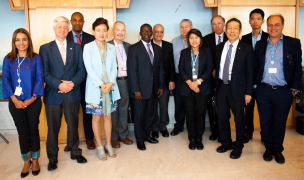 The ITU is preparing a new book, provisionally to be entitled “ICT4SDGs: Economic Growth, Innovation and
The ITU is preparing a new book, provisionally to be entitled “ICT4SDGs: Economic Growth, Innovation and
Job Creation” in advance of the WTDC meeting in Buenos Aires in October 2017 http://www.itu.int/net/events/eventdetails.asp… . This has been explored in some detail over the last two days at a fascinating discussion convened in Geneva.
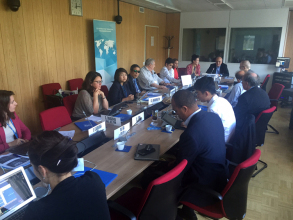 I have been invited to lead on a 6,000 word chapter, provisionally entitled “Sustainability in Development: Critical Elements” that has an initial summary as follows: “the chapter identifies how ICTs engage with the sustainability agenda and the various elements of the ecosystem (such as: education, finance/capital, infrastructure, policy, market, culture/environment, opportunities) and the stakeholders that are indispensable for ensuring resilient and sustainable development activities in developing countries in spite of some chronic shortages coupled with fast changing and fluid situations that can negatively hamper the efforts”.
I have been invited to lead on a 6,000 word chapter, provisionally entitled “Sustainability in Development: Critical Elements” that has an initial summary as follows: “the chapter identifies how ICTs engage with the sustainability agenda and the various elements of the ecosystem (such as: education, finance/capital, infrastructure, policy, market, culture/environment, opportunities) and the stakeholders that are indispensable for ensuring resilient and sustainable development activities in developing countries in spite of some chronic shortages coupled with fast changing and fluid situations that can negatively hamper the efforts”.
I want this chapter very much to be a collective, bottom-up effort, and am exploring various collective ways of generating content – although this is hugely difficult given the tight word limit! At this stage, it would be great to receive suggestions as to (a) what content the chapter should focus on, and (b) examples of case studies of successes and failures with respect to the use of ICTs for sustainable development. Please share any thoughts with me – before the end of September!
For those who may be unfamiliar with my own critical comments on the linkages between ICTs and the SDG agenda do see https://unwin.wordpress.com/…/icts-and-the-failure-of-the-…/, and on the abuse of the term ecosystem https://unwin.wordpress.com/2014/03/16/icts-and-ecosystems/ . Rest assured, though, that the chapter for the ITU will reflect very different perspectives, and I hope that it will indeed represent the interests and concerns of the wider ICT4D community.


September 13, 2016
Dubai in 1980
Continuing the digitization of some of my early slide collections, I post below a selection of pictures from Dubai in 1980. I remember it then undergoing a building boom, but that was of a completely different scale from what has subsequently happened over the last 30 years or so. I wish I had been there in the 1960s, when by all reports it was a small, sleepy town built around the harbour! However, my pictures do still capture something of the old character of the city, and the busy waterfront. I loved wandering around the Bastakiya quarter, and remember being fascinated by the wind towers and architecture. It is good to see the sympathetic restoration that has taken place in the quarter in recent years, but it does not have quite the same atmosphere that it did then! It was good to wander in the suq and see all of the glittering gold that i could never afford! I also loved just watching the small boats and dhows plying their trade along the creek. My favourite hotel was undoubtedly the Meridien, a quiet oasis where I could escape from the business of the city, but surprisingly I never took a photograph if it!
Click to view slideshow.


September 10, 2016
Abu Dhabi in 1980
I first visited Abu Dhabi in 1980; there was construction everywhere and part of me wished I had been there 20 years earlier! The changes since then, though, have been enormous, and it is very hard to recognise any of what I experienced then in the modern city of today. As part of my ongoing project of digitsing my slides from 30-40 years ago, I hope that the selection below captures something of the city as it was at that time: the juxtaposition of small new mosques with high-rise buildings; the contrasts between the greenness of the agricultural projects at Al Ain, and the urban concrete of Abu Dhabi city itself; the differences in wealth between local citizens and immigrant labourers who were mainly from South Asia; the belief that pumping oil could create cities, whereas pumping water from the underground aquifers could turn the desert green; the rather sleepy atmosphere that pervaded the place; the beauty and colours of the dhows on the blue, blue sea; the markets on the streets where one could buy everything from animals to all sorts of imported goods from containers; the mysteries of the suq…
Click to view slideshow.


September 7, 2016
Against “EdTech”…
Sitting in on a recent donor-stakeholder discussion about the use of ICTs to support education for poor people in developing countries, inspired me to formalize my critical thoughts on the increasingly common usage of the term “EdTech”. There are three main reasons why this terminology is so problematic:
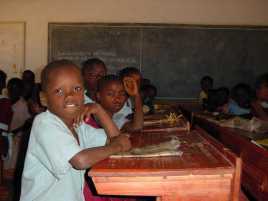 First, the term EdTech places the emphasis on the technology rather than the educational and learning outcomes. Far too many initiatives that have sought to introduce technology systematically into education have failed because they have focused on the technology rather than on the the education. The use of the term EdTech therefore places emphasis on a failed way of thinking. Technology will only be of benefit for poor and marginalized people if it is used to deliver real learning outcomes, and this is the core intended outcome of any initiative. It is the learning that matters, rather than the technology.
First, the term EdTech places the emphasis on the technology rather than the educational and learning outcomes. Far too many initiatives that have sought to introduce technology systematically into education have failed because they have focused on the technology rather than on the the education. The use of the term EdTech therefore places emphasis on a failed way of thinking. Technology will only be of benefit for poor and marginalized people if it is used to deliver real learning outcomes, and this is the core intended outcome of any initiative. It is the learning that matters, rather than the technology.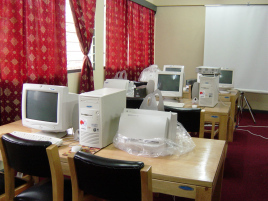 Second, it implies that there is such a thing as Educational Technology. The reality is that most technology that is used in schools or for education more widely has very little to do specifically with education or learning. Word processing and presentational software, spreadsheets, and networking software are nothing specifically to do with education, although they are usually what is taught to teachers in terms of IT skills! Such software is, after all, usually called Office software, as in Microsoft Office, or Open Office. Likewise, on the hardware side, computers, mobile phones and electronic whiteboards are not specifically educational but are rather more general pieces of technology that companies produce to generate a profit. Learning content, be it open or proprietary, is perhaps the nearest specifically educational technology that there is, but people rarely even think of this when they use the term EdTech!
Second, it implies that there is such a thing as Educational Technology. The reality is that most technology that is used in schools or for education more widely has very little to do specifically with education or learning. Word processing and presentational software, spreadsheets, and networking software are nothing specifically to do with education, although they are usually what is taught to teachers in terms of IT skills! Such software is, after all, usually called Office software, as in Microsoft Office, or Open Office. Likewise, on the hardware side, computers, mobile phones and electronic whiteboards are not specifically educational but are rather more general pieces of technology that companies produce to generate a profit. Learning content, be it open or proprietary, is perhaps the nearest specifically educational technology that there is, but people rarely even think of this when they use the term EdTech!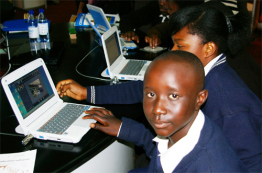 Third, it is fascinating to consider why the term EdTech has been introduced to replace others such as e-learning or ICT for education (ICT4E) which clearly place the emphasis on the learning and the education. The main reason for this is that the terminology largely reflects the interests of private sector technology companies, and especially those from the US. The interests underlying the terminology are a fundamental part of the problem. EdTech is being used and sold as a concept primarily so that companies can sell technology that has little specifically to do with education, and indeed so that researchers can be funded to study its impact!
Third, it is fascinating to consider why the term EdTech has been introduced to replace others such as e-learning or ICT for education (ICT4E) which clearly place the emphasis on the learning and the education. The main reason for this is that the terminology largely reflects the interests of private sector technology companies, and especially those from the US. The interests underlying the terminology are a fundamental part of the problem. EdTech is being used and sold as a concept primarily so that companies can sell technology that has little specifically to do with education, and indeed so that researchers can be funded to study its impact!

Those who use the term EdTech are all conspiring to place the emphasis on the technology rather than on the education. This is often deliberate, but always misguided! Many of those who use the term are also concerned primarily in generating profits from education rather than delivering effective, life-changing opportunities for people to learn. If you ever use the word again, please think twice about it, and preferably use something more appropriate!


September 5, 2016
Hats (periodic markets) in South Bihar, 1976-1977
This is the last, and most important, in my series of images from 1976 and 1977 when I was in what was then South Bihar (now Jharkhand) in India. I had the enormous privilege of assisting Sudhir Wanmali who was then undertaking research on the hats, or periodic markets in Singbhum District. He taught me so much, not formally but just by being with him, watching and listening to how he interviewed, and above all by seeing the ways in which he interacted with people. His wisdom, enthusiasm, generosity and passion for research were, and indeed still are, inspirational.
The hats are markets that take place regularly in different locations, and provide an opportunity not only for rural people to sell to the itinerant traders and others in the market, but also to buy things that they need and do not produce themselves. As the following images show, it was possible to buy and sell almost anything you might need there, from the cloth, pots and brightly coloured glass bangles brought in by traders, to sweet potatoes, onions, tomatoes and many other vegetables, as well as the cattle and goats being sold by the farmers. Some traders also collected products such as lac, collected in the forests by the people who lived there, and others would also buy up small amounts of paddy that farmers brought for sale. At the end of the day, I remember rice beer being sold in simple cups made of leaves. The pictures below are mainly from places such as Bangaon, Hat Gamharia, Nakti, Tebo and Jagannathpur.
Sudhir’s work was published in an excellent monograph – Wanmali, S. (1981) Periodic Markets and Rural Development in India, Delhi: BR – but is also written up in other papers, including:
Wanmali, S. (1980) The regulated and periodic markets and rural development in India, Transactions of the Institute of British Geographers, new series 5(4), 466-86.
Johnson, J. and Wanmali, S. (1981) A Q-analysis of periodic market systems, Geographical Analysis, 13(2), 262-275
Wanmali, S. (1985) Networks of distribution of goods and services in rural India: some spatial considerations, in ICRISAT, Agricultural Markets in the Semi-Arid Tropics. Proceedings of the International Workshop, 24-28 October 1983, ICRISAT, 133-138
At the time, I was also working on medieval England and drew parallels between marketing systems that had been created there in the 14th century, and those that I had experienced in Singbhum. This was published as:
T. Unwin (1981) Rural marketing in medieval Nottinghamshire, Journal of Historical Geography, 7, 231–51.
I very much hope that these pictures, now some 40 years old, not only contribute to the archive of Jharkhand’s past, but also reflect the beauty of this special part of the world. I often wonder how the lives of the many people I met there turned out…
Click to view slideshow.


September 4, 2016
Agriculture and rural life in South Bihar, 1976-1977
Working with my dear friend and colleague, Sudhir Wanmali, in what was then rural South Bihar (now Jharkhand) in the mid-1970s was one of the most influential times of my life. It taught me so much: that rural people are universally exploited by those living in urban areas; that rural life in South Asia is incredibly hard; and that South Bihar (as it was then known) is amazingly beautiful. I very much hope that the images below show something of that inspiration, but they cannot sufficiently capture the smells and sounds of rural life in India in the 1970s.
Click to view slideshow.


Small towns and villages in South Bihar and West Bengal, 1976 and 1977
Continuing digitizing the slides from my research and travels in India in 1976 and 1977, I share here some pictures of small towns and villages in what was then South Bihar (now Jharkhand) and West Bengal. These include pictures of the towns of Chaibasa and Chakradharpur, as well as several villages in this beautiful part of India. I remember particularly the paintings on the walls of the houses in the villages, and some of the writing on them as well, not least the slogan “Fight for malaria”! The pictures here also show the sadness of smallpox, with the solitary gravestone, and also other such stones which I was told marked village boundaries. There are also images of tile and brick making, and the sequence closes with a village school, which I had forgotten about but now makes me think of all of the other schools, particularly in Africa, that I have visited in the last 15 or so years. Other rural, agricultural scenes will follow in a future post!
Click to view slideshow.


September 3, 2016
Jamshedpur 1976-1977
Continuing my visual reflections of India in 1976 and 1977, I spent much of my time there based at the Xavier Labour Relations Institute in Jamshedpur, in what was then South Bihar, now Jharkhand. This was an amazing oasis of peace, calm and intellectual discourse, at the edge of the “steel town” of Jamshedpur. Interestingly, my photographs do not entirely capture my memories, but they do reflect the smart houses of the rich, the dominance of the Tata Iron and Steel Company (TISCO), the Jubilee Gardens park, the street stalls where I bought a copy of the Communist Manifesto, the vibrant somewhat frightening energy of the Muharram celebrations, the hazardous scaffolding, the peace of the nearby river, and the Gurkha guards who befriended me at the XLRI. They are still vivid in my mind, and I hope that by sharing these images from 40 years ago others may glimpse into the past of this fascinating town.
Click to view slideshow.


August 29, 2016
Scenes from Delhi in 1976
Continuing to digitize some of my old photographs, I share here pictures of Delhi in 1976. It is strange to think that it was nearer to independence in 1947 when I first visited (only 29 years), than it is now to when I first visited (40 years). So much remains the same in Delhi, but much has also changed. I note in particular the vast number of new cars – and the consequent air pollution. But it still remains an amazing city, with such fond memories. I look forward so much to my next visit.
Click to view slideshow.


“Reclaiming ICT4D” – in the beginning
It is always exciting submitting a book manuscript to a publisher, and today is no exception! I have at last finished with my editing and revisions, and sent the manuscript of Reclaiming ICT4D off to Oxford University Press. I just hope that they like it as much as I do! It is by no means perfect, but it is what I have been wanting to write for almost a decade now.
This is how it begins – I hope you like it:
“Chapter 1
A critical reflection on ICTs and ‘Development’
This book is about the ways through which Information and Communication Technologies (ICTs) have become entwined with both the theory and the practice of ‘development’. Its central argument is that although the design and introduction of such technologies has immense potential to do good, all too often this potential has had negative outcomes for poor and marginalized people, sometime intended but more often than not unintended. Over the last twenty years, rather than reducing poverty, ICTs have actually increased inequality, and if ‘development’ is seen as being about the relative differences between people and between communities, then it has had an overwhelming negative impact on development. Despite the evidence to the contrary, I nevertheless retain a deep belief in the potential for ICTs to be used to transform the lives of the world’s poorest and most marginalized for the better. The challenge is that this requires a fundamental change in the ways that all stakeholders think about and implement ICT policies and practices. This book is intended to convince these stakeholders of the need to change their approaches.
It has its origins in the mid-1970s, when I learnt to program in Fortran, and also had the privilege of undertaking field research in rural India. The conjuncture of these two experiences laid the foundations for my later career, which over the last twenty years has become increasingly focused on the interface between Information and Communication Technologies (ICTs) on the one hand, and the idea of ‘development’ on the other. The book tells personal stories and anecdotes (shown in a separate font). It draws on large empirical data sets, but also on the personal qualitative accounts of others. It tries to make the complex theoretical arguments upon which it is based easy to understand. Above all, it has a practical intent in reversing the inequalities that the transformative impacts of ICTs have led to across the world.
I still remember the enjoyment, but also the frustrations, of using punch cards, with 80 columns, each of which had 12 punch locations, to write my simple programs in Fortran. The frustration was obvious. If you made just one tiny mistake in punching a card, the program would not run, and you would have to take your deck of cards away, make the changes, and then submit the revised deck for processing the next day. However, there was also something exciting about doing this. We were using machines to generate new knowledge. They were modern. They were the future, and we dreamt that they might be able to change the world, to make it a better place. Furthermore, there was something very pleasing in the purity and accuracy that they required. It was my fault if I made a mistake; the machine would always be precise and correct. These self-same comments also apply to the use of ICTs today. Yes, they can be frustrating, as when one’s immensely powerful laptop or mobile ‘phone crashes, or the tedium of receiving unwanted e-mails extends the working day far into time better spent doing other things, but at the same time the interface between machines and modernity conjures up a belief that we can use them to do great things – such as reducing poverty.
Figure 1.1 Modernity and the machine: Cambridge University Computer Laboratory in the early 1970s.

Source: University of Cambridge Computer Laboratory (1999)
In 1976 and 1977 I had the immense privilege of undertaking field research in the Singbhum District of what was then South Bihar, now Jharkhand, with an amazing Indian scholar, Sudhir Wanmali, who was undertaking his PhD about the ‘hats’, or periodic markets, where rural trade and exchange occurred in different places on each day of the week (Figure 1.2). Being ‘in the field’ with him taught me so much: the haze and smell of the woodsmoke in the evenings; the intense colours of rural India; the rice beer served in leaf cups at the edges of the markets towards the end of the day; the palpable tensions caused by the ongoing Naxalite rising (Singh, 1995); the profits made by mainly Muslim traders from the labour of Adivasi, tribal villagers, in the beautiful forests and fields of Singbhum; the creaking oxcarts; and the wonderful names of the towns and villages such as Hat Gamharia, Chakradharpur, Jagannathpur, and Sonua. Most of all, though, it taught me that ‘development’ had something powerful to do with inequality. I still vividly recall seeing rich people picnicking in the lush green gardens of the steel town of Jamshedpur nearby, coming in their smart cars from their plush houses, and then a short distance away watching and smelling blind beggars shuffling along the streets in the hope of receiving some pittance to appease their hunger. The ever so smart, neatly pressed, clothes of the urban elite at the weekends contrasted markedly with the mainly white saris, trimmed with bright colours, that scarcely covered the frail bodies of the old rural women in the villages where we worked during the week. Any development that would take place here had to be about reducing the inequalities that existed between these two different worlds within the world of South Bihar. This made me look at my own country, at the rich countries of Europe, and it made me all the more aware of two things: not only that inequality and poverty were also in the midst of our rich societies; but also that the connections between different countries in the world had something to do with the depth of poverty, however defined, in places such as the village of Sonua, or the town of Ranchi in South Bihar.
Figure 1.2: hat, or rural periodic market at Hat Gamharia, in what was then South Bihar, 1977] 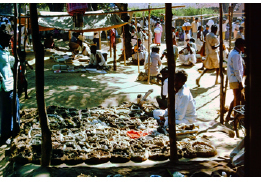 Source: Author
Source: Author
Between the mid-1970s and the mid-2010s my interests in ICTs, on the one hand, and ‘development’ on the other, have increasingly fascinated and preoccupied me. This book is about that fascination. It shares stories about how they are connected, how they impinge on and shape each other. I have been fortunate to have been involved in many initiatives that have sought to involve ICTs in various aspects of ‘development’. In the first instance, my love of computing and engineering, even though I am a geographer, has always led me to explore the latest technological developments, from electronic typewriters that could store a limited number of words, through the first Apple computers, to the Acorn BBC micro school and home computer launched in 1981, using its Basic BASIC programming language, and now more recently to the use of mobile ‘phones for development. I was fascinated by the potential for computers to be used in schools and universities, and I learnt much from being involved with the innovative Computers in Teaching initiative Centre for Geography in the 1990s (see Unwin and Maguire, 1990). During the 2000s, I then had the privilege of leading two challenging international initiatives that built on these experiences. First, between 2001 and 2004 I led the UK Prime Minister’s Imfundo: Partnership for IT in Education initiative, based within the Department for International Development (UK Government Web Archive 2007), which created a partnership of some 40 governments, private sector and civil society organisations committed to using ICTs to enhance the quality and quantity of education in Africa, particularly in Kenya, South Africa and Ghana. Then in the latter 2000s, I led the World Economic Forum’s Partnerships for Education initiative with UNESCO, which sought to draw out and extend the experiences gained through the Forum’s Global Education Initiative’s work on creating ICT-based educational partnerships in Jordan, Egypt, Rajasthan and Palestine (Unwin and Wong, 2012). Meanwhile, between these I created the ICT4D (ICT for Development) Collective, based primarily at Royal Holloway, University of London, which was specifically designed to encourage the highest possible quality of research in support of the poorest and most marginalized. Typical of the work we encouraged was another partnership-based initiative, this time to develop collaborative research and teaching in European and African universities both on and through the use of ICTs. More recently, between 2011 and 2015 I had the privilege of being Secretary General of the Commonwealth Telecommunications Organisation,
Two things have been central to all of these initiatives: first a passionate belief in the practical role of academics and universities in the societies of which they are a part, at all scales from the local to the international; and second, recognition of the need for governments, the private sector and civil society to work collaboratively together in partnerships to help deliver effective development impacts. The first of these builds fundamentally on the notion of Critical Theory developed by the Frankfurt School (Held, 1980), and particularly the work of Jürgen Habermas (1974, 1978) concerning the notion of knowledge constitutive interests and the complex inter-relationships between theory and practice. The next section therefore explores why this book explicitly draws on Critical Theory in seeking to understand the complex role and potential of ICTs in and for development. Section 1.2 thereafter then draws on the account above about rural life in India in the 1970s to explore in further detail some of the many ways in which the term ‘development’ has been, and indeed still is, used in association with technology.”


Tim Unwin's Blog
- Tim Unwin's profile
- 1 follower



